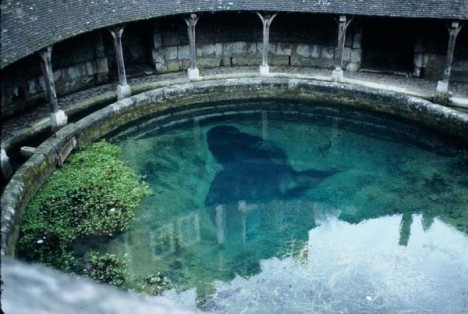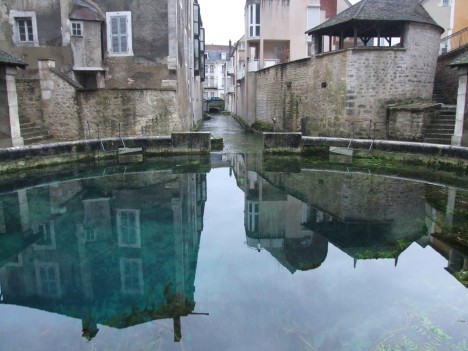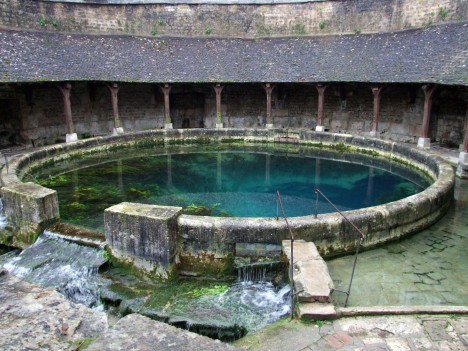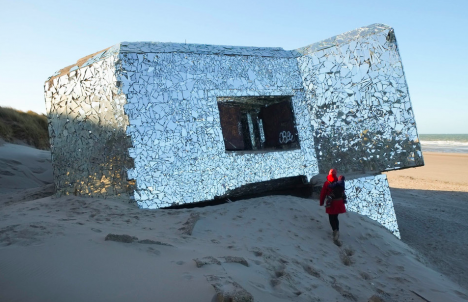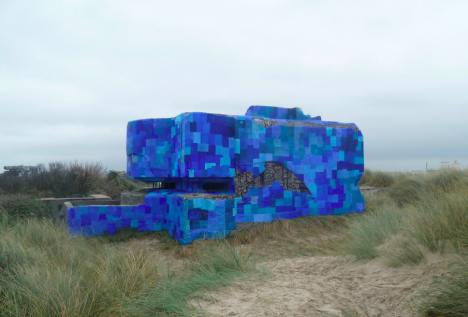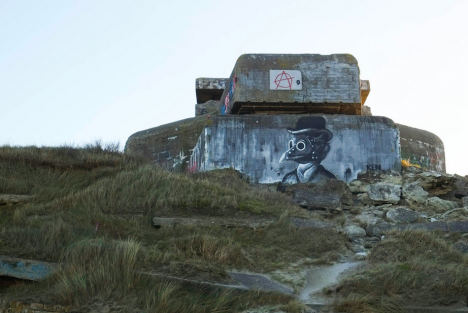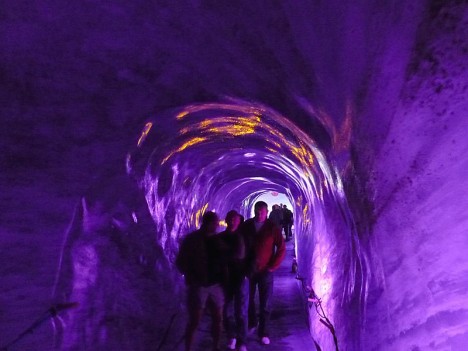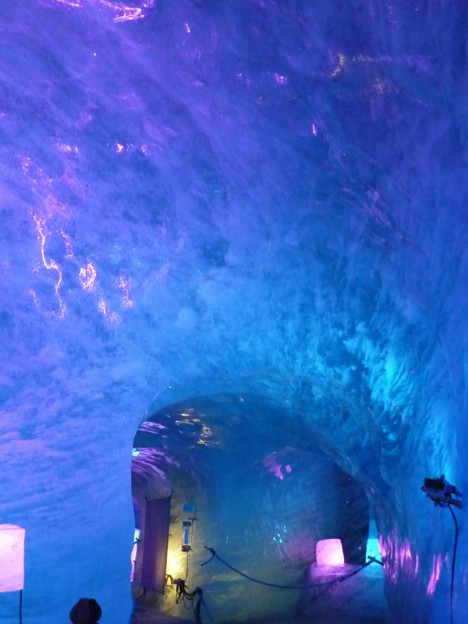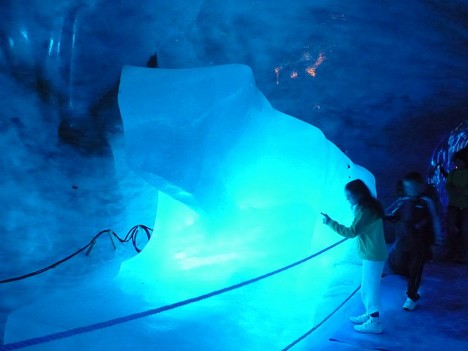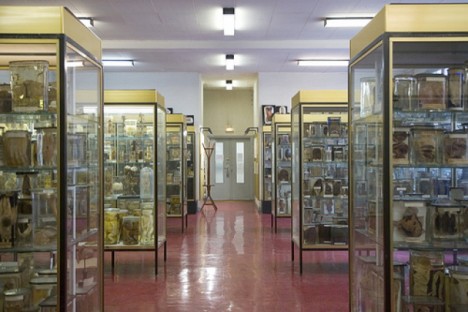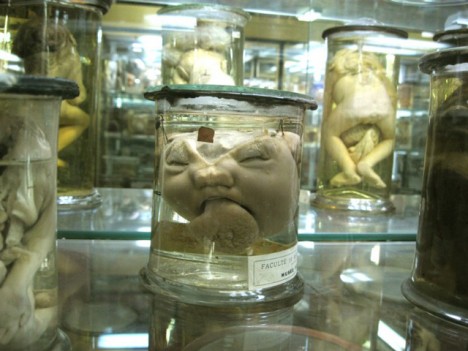Fosse Dionne Medieval Grotto, Tonnerre
In the center of the ancient city of Tonnerre, a natural spring has become a mossy grotto with a still blue surface that reflects the old stone buildings surrounding it. Used in Roman times to supply clean water to an adjacent palace, the spring gained a stone rim and spout in the 18th century, as well as an amphitheater used as a public laundry.
Nazi Bunkers Turned Public Art
What would the Nazis think if they could see their French bunkers now, which have become little more than crumbling canvases for graffiti and guerrilla art installations? The Germans built a row of cement bunkers along the length of the Fort des Dunes in Leffrinckoucke at the very northernmost tip of the nation, which were abandoned along with the rest of the military compound by the 1950s. Left to deteriorate in the unforgiving seaside climate, the buildings had no use for decades. Now, street artists take them over, even covering one in mirrors.
Mer de Glace Ice Caves
On the northern slopes of Mont Blanc in the French Alps, you can wander man-made ice caves dug into the nation’s longest glacier. Take the Montenvers train from Chamonix town center up to the glacier, and then a gondola lift will deliver you straight to the ice tunnels, which are re-cut every summer.
Musée Dupuytren, Paris
Virtually every grotesque medical abnormality you can think of can be viewed up close and personal within Paris’ Musée Dupuytren, whether recreated in wax models or preserved in formaldehyde. Thousands of anatomical curiosities line row after row of glass shelves in this unusual space founded in 1835 by Mathieu Orfila, the “Father of Toxicology.” Check out an amazing photo set of the museum at Morbid Anatomy.
